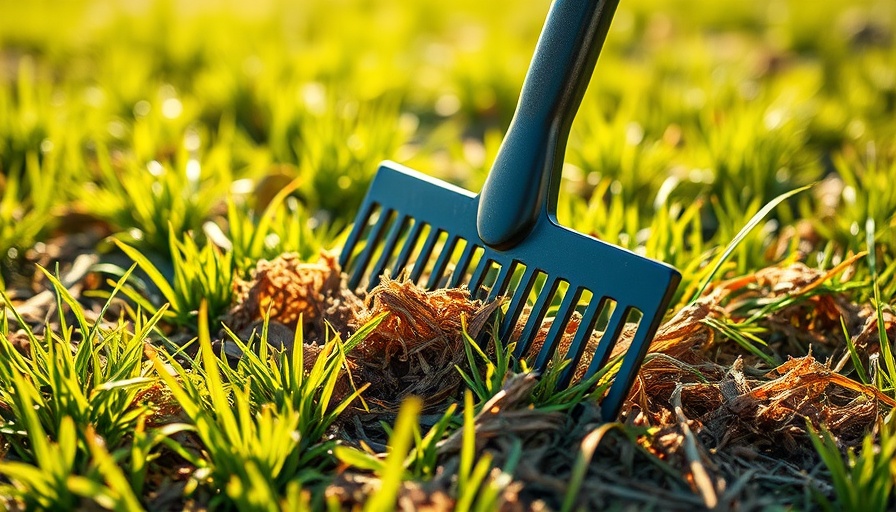
Transform Your Lawn: Understanding Dethatching
Your lawn deserves the best, and dethatching is a crucial part of maintaining its health. This process involves removing the layer of dead grass and organic matter that builds up between the soil and your grass blades, known as thatch. When thatch exceeds half an inch, it hampers your grass’s ability to absorb essential nutrients and water. Understanding when to dethatch is key—look out for brown patches, slow growth, or a spongy feel beneath your feet.
Signs It's Time to Dethatch Your Lawn
Regular maintenance of your lawn ensures it remains vibrant. You might wonder, how often should I dethatch? Typically, lawns benefit from dethatching every 2-3 years, and the best times to do so are early spring or fall, allowing the grass to recover quickly. Ensure you address signs like dead brown patches or a bouncy walk across the yard, indicating that it’s time to act.
Deciding on the Right Tools for Dethatching
Choosing the right tools means considering your lawn size and conditions. Options range from simple handheld thatching rakes to powered dethatchers. Investing in a powered dethatcher could be perfect for larger yards, and renting one is an affordable, convenient option, especially if you want to avoid long-term storage worries. For smaller areas, a thatching rake can do the trick effectively.
Step-by-Step Guide to Dethatching
Here's a simplified guide to help you get started:
- Mow the Lawn: Trim your grass to about half its typical height to reduce potential damage during dethatching.
- Using a Powered Dethatcher: Clear any debris from your yard and engage the dethatcher’s blades to go over the desired area in parallel passes.
- Adjust the Rake: If using a thatching rake, adjust its angle to penetrate the grass effectively without causing damage.
Emphasizing the Importance of Dethatching
A healthy lawn contributes significantly to the aesthetics of your home, and a well-maintained lawn also enhances the curb appeal of your property. Regular dethatching not only helps improve air and water permeability but also fosters stronger roots leading to lush grass growth. Not only does this make for a beautiful yard, but it also provides a sustainable environment for plants and wildlife.
FAQs on Dethatching
As you embrace this DIY home improvement project, you may have some questions:
- Can I dethatch my lawn too often? Yes, excessive dethatching can damage your grass, so adhere to the recommended frequency.
- Is dethatching the same as aerating? No, while both are essential lawn care methods, dethatching focuses on removing the thatch layer, while aeration improves soil texture and allows nutrients to penetrate the roots.
Making Dethatching a Part of Your Lawn Care Routine
Integrating dethatching into your lawn maintenance routine can lead to higher grass quality and a healthier ecosystem around your home. This simple action has the potential to enhance the quality of not just your lawn but your overall home environment. Caring for your indoor space with DIY home improvement projects can complement your outdoor efforts. Embrace the movement towards sustainable living and enhance your lifestyle with care for both your home and yard.
Final Thoughts
Dethatching your lawn is not just about aesthetics; it’s a vital step towards achieving a lush, green outdoor space. By following these simple yet effective steps, you can promote healthier grass growth and a more vibrant lawn. Ready to take on the task? With the right tools and techniques, you can achieve a beautiful and healthy lawn that enhances your home. Incorporate this practice within your broader home maintenance and improvement strategies, and watch your living space transform.
 Add Row
Add Row  Add
Add 




Write A Comment